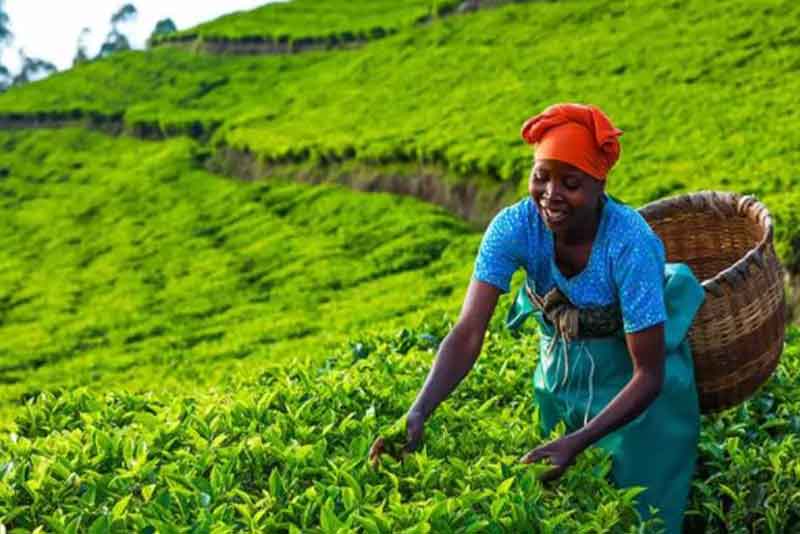
Africa must seize the global commodity exchange opportunity
A mantra that will be often heard in the corridors of power, whether in the developed or developing world, is that 'the future belongs to the nations of the global south'. While this might seem like hyperbole, the potential of the Global South to become the driver of the world economy is absolutely real because the numbers reveal that to be true.
Africa has 50% of the world's unused arable land (food demand is expected to increase on our continent by over 200% by 2030 and globally by over 50% by 2050). In addition, with improved logistics, the harnessing of better agricultural practices, and strong government and multilateral support, the future for agriculture and agri-business on the continent is bright.
Among the many factors that will turn the obvious potential of Africa's agriculture into reality is the strength of the continent's commodity markets.
Commodity markets have been dominated by the traditional global powerhouses (The United States of America, Japan, Australia, Germany, and Canada). However, what we are now seeing is that some of the largest commodity exchanges are now operating in emerging markets like India, Brazil, and China.
While CME Group Inc (founded in 1848 at the Chicago Board of Trade) dominates the commodity exchange industry with over 20 million individual contracts transacted daily in recent years, others such as the ICE (International Exchange) and TOCOM (Tokyo Commodity Exchange) transact millions of commodity transactions daily worth tens of billions of dollars.
The ability of these exchanges to connect producers to a global marketplace has been a boon for all parties involved. These commodity exchanges have had significant and well-documented developmental benefits; they've made economies more inclusive, strengthened the links between agriculture and finance, improved risk management, and made global commodity markets more efficient and competitive.
In comparison to some of the aforementioned regions, where some commodity markets have existed since 1848, Africa has been extremely late to the party. Fortunately, African players are now taking their place in the global commodity exchange ecosystem. Rwanda's East Africa Exchange (EAX) is one such continental player.
EAX, Africa's third largest exchange, was established in 2014 to facilitate farmers and producers of agricultural produce in obtaining better prices for their commodities while allowing them to increase access to financial sector services through the issuing of quality and quantity guarantees, along with collateral management services. Today, EAX primarily trades in staple products (maize, soya, beans, wheat, sorghum, paddy rice, etc).
As a commodities exchange, EAX provides a holistic approach that includes aggregation, processing, storage, collateral management, and clearing, to ensure optimal value is captured and additional liquidity options are created for Rwandan and regional farmers.
In short, EAX is working to create a trading and supply chain platform that will connect farmers and traders to global commodity and financial markets in ways that ensure enhanced income and improved livelihoods. The most common cause of commodity exchange failures on the continent over the past ten years has been a "top-down" approach that ignores the necessary complimentary infrastructure i.e. aggregation, storage, and transportation that is needed to make a commodity exchange viable. As a result of this learning, EAX is focused on developing a bottom-up approach that starts with farmers and warehousing as the foundation for market development. While exchanges like EAX have made significant progress, Africa is only scratching the surface of the economic game-changer that is commodity exchanges.
With world-leading 4.3% per year increases in agricultural growth since 2000, the continent's underlying production volumes are today sufficient enough to support a vibrant commodity market. In a nutshell, there is enough agricultural production to support viable commodity markets.
Price volatility, and the resulting unstable food prices, has created huge risks for both small-holder farmers as well as African governments. This has provided strong incentives for price volatility mitigation through commodity exchange platforms. When we add high marketing and transaction costs to the increased price volatility caused by the COVID-19 pandemic, we see huge incentives for the adoption of commodity exchanges by Africa's markets as a way to mitigate future risk.
Interest in commodity exchanges by governments, private sector, and donors has continued to grow. So much so that commodity exchange development has been included in the African Union's "Agenda 2063", its master-plan for transforming Africa into a global powerhouse.
Today Africa has access to the technology that not only makes possible the payments and dissemination of price and market information that make commodity exchanges possible, but in addition this technology makes it possible to trade from almost anywhere on the continent. A Rwandan farmer in Gakenke District now has, in theory, the same access to the commodity markets as a grain trader in Maputo, Mozambique because of this technology.
Africa has all the building blocks necessary for viable commodity exchanges; all we now need is to act. The time has come for African economies to leverage commodity exchanges in the growth of African agriculture and agribusiness to improve the livelihoods of the millions of Africans, making "the Africa we want" not just a slogan but a goal within our reach. Our people cannot afford to waste any more time.
